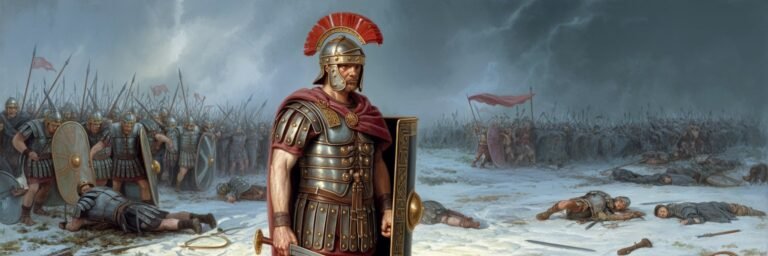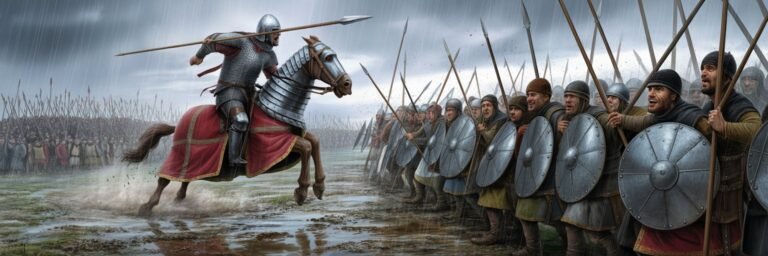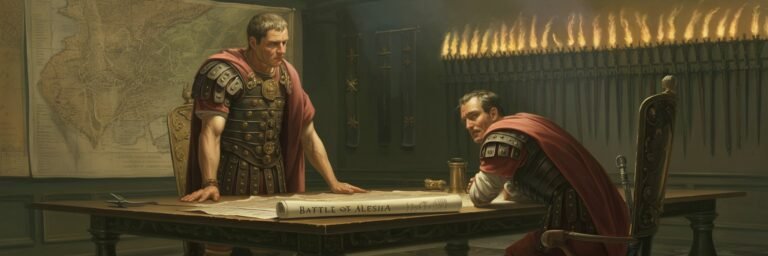INTRODUCTION
The intense and bloody fray of battles has exercised a potent influence over the contours of human history, shaping the destinies of empires, nations, and peoples. Yet, often overlooked in these epic encounters are the political maneuvers, careful alliances, and power struggles that precipitate these deadly confrontations and often determine their outcomes. From the dust-swept plains of ancient Troy to the storm-battered cliffs of Normandy, political intrigue and power plays have been as instrumental as the clash of steel and the roar of artillery in deciding the fate of civilizations.
HISTORICAL BACKGROUND
The long, intricate tale of politically fueled warfare springs from the dawn of recorded history. As far back as the ancient Sumerians of Mesopotamia, who were perhaps the first civilization to create an organized, professional army, political machinations boiled underneath the surface of every military campaign. The Sumerian rulers formed military alliances, backstabbed each other, and engaged in tactical diplomacy to gain the upper hand on the battlefield.
Significantly later, the Roman Empire scaled the heights of its glory on the back of its disciplined legions. Yet these military triumphs were belied by a perennially simmering pot of political intrigue at home. Power dynamics between patricians and plebeians, between senators and generals, between the emperor and the mob shaped every military decision and drove the expansion and eventual contraction of the empire.
THEORIES AND INTERPRETATIONS
Historians and scholars espouse varying interpretations about the impact of political intrigue on famous battles. Some argue that machinations behind the scenes often prove to be the determining factor in victory or defeat. The mainstream “Great Man Theory” posits that influential political and military leaders significantly influence the course of history through their personal characteristics, decisions, and strategies.
However, a contrasting perspective, often referred to as the “structural theory,” advocates that political structures and systemic societal factors heavily impact warfare. For example, it suggests the peasant revolt that contributed to the defeat of Richard III in the Battle of Bosworth Field (1485) was a manifestation of structural issues rather than individual players’ actions.
MYSTERIES AND CONTROVERSIES
Battles are as thick with mystery and controversy as they are with blood and steel. The Battle of Thermopylae (480 BC), immortalized by Herodotus, raises questions about the rumored alliance between Persian King Xerxes and Spartan King Demaratus. Was it this subtle power play that tipped the scales in favor of the Persians?
Similarly, during World War II, the members of the July Plot (1944) tried and failed to assassinate Hitler. Had they succeeded, could it have ended the war and altered the course of global history? Such questions fuel the eternal debates in history and confer a fascinating, unfinished feel to our understanding of the past.
SYMBOLISM AND CULTURAL SIGNIFICANCE
Power struggles and political intrigue in battles carry profound symbolic and cultural printing. The American Civil War, a gruesome carnage ignited and perpetuated by political frictions over several contentious issues, particularly slavery, has come to symbolize the struggle for human rights and racial equality.
From a cultural perspective, the cunning strategies and political maneuvers employed by the opponents in the Battle of Kurukshetra in the ancient Indian epic “Mahabharata” serve as metaphors for life’s struggles and moral dilemmas. They are weaved into India’s cultural fabric through literature, theatre, and popular culture, underlining the vibrant connection between history and shared cultural identity.
MODERN INVESTIGATIONS
Modern investigations into the political dimensions of warfare, driven by numerous academic studies and archaeological discoveries, have revealed startling insights. New interpretations challenge traditional understandings of famous battles. For instance, evidence suggesting an alliance between the Zhou kings and the Shang dynasty’s military leaders before the Battle of Muye in ancient China (1046 BC), indicating that the overthrow was potentially premeditated, added layers to historical analysis.
In contemporary military expeditions, through the lenses of modern war correspondence, the biography of leaders, and the dissection of diplomacy, the power maneuvers and political cause-and-effects are recorded in the minutest details, enriching our understanding of modern warfare.
LEGACY AND CONCLUSION
The power struggles and political machinations that have permeated every major battle in history have left profound legacies. They heavily influence contemporary international relations, tactics of warfare, and socio-political configurations. The national boundaries drawn or blurred by warfare, the balance of power secured or lost during pivotal campaigns, and the peace treaties signed or violated in the aftermath of battles have, and continue to, dictate the global political climate.
In conclusion, the intricate web of political intrigue and power struggles has trailed the march of armies throughout history. It has proved to be an inextricable part of the human narrative, from the first tribal skirmishes to the panorama of modern warfare. By studying this aspect of historical battles, we can gain a layered understanding of our past and insights into how it continues to shape our present and future.



